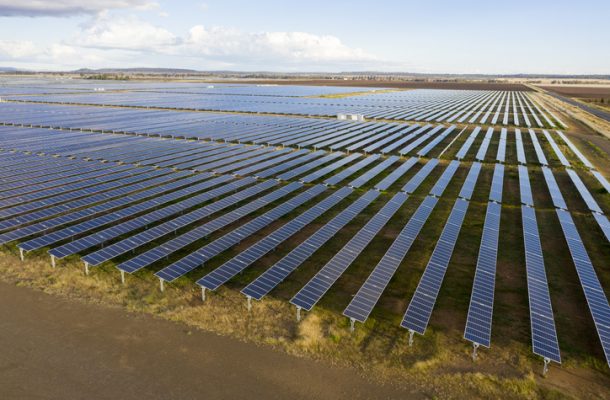Facebook’s decision to announce its rebrand to Meta last month was no doubt accelerated by its latest controversies. But, decoys and diversions aside, it also provided insight into Mark Zuckerberg’s vision for the future—one seemingly shared by much of Silicon Valley—in which we will work, study and socialise in an entirely digital environment.
Online community-building is already a big business. There are more than 250 million people working together on Microsoft Teams, 500 million language students on Duolingo, and 140 million gamers building the Minecraft metaverse.
As more and more emerging technologies—such as artificial intelligence and virtual and augmented reality—become part of our daily lives, and with COP26 underway, it’s a good time to consider how we will actually power this new digital landscape.
Australia has a unique opportunity to make use of its abundant sustainable energy. During the Covid-19 pandemic, many Australian businesses shifted to online operations as remote work became a necessity.
Covid-19 hugely accelerated the digitisation of business and revealed the many benefits of the digital workplace—such as no commuting, no business travel, more family time, and flexible working hours and locations.
However, it also made collaboration and interpersonal engagement with colleagues and customers more challenging. Virtual reality and other collaborative technologies have the potential to make remote working a more seamless and immersive experience for a truly online workplace, but it could also come at a cost for users, hosting services and, ultimately, the environment.
Australian power consumption has dramatically increased over the past decade. Many Australians felt the sting of this when their power and utilities bills increased significantly while they were working and studying from home during lockdowns.
Google estimates that a single search costs it about 0.0003 kilowatts or 1 kilojoule of energy, which is roughly equivalent to the amount of energy the human body burns in 10 seconds. The true energy cost of certain online services, such as Microsoft’s and Amazon’s cloud-based platforms, as well as open-source software and cryptocurrency, can be difficult to quantify. Even small power increases on a per-machine basis add up to an enormous energy load when used at scale across the population.
Power consumption will continue to rise as emerging and critical technologies come online, such as 5G and 6G mobile networks and autonomous vehicles. The increased load on the backend high-performance computing, data analytics and data storage architectures that underpin research and development (including computational modelling for medicine and novel vaccine development) will also be energy-intensive.
However, the current investment in non-renewable energy sources won’t scale. Small initiatives such as rebates for solar panels on domestic roofs may offset household use, but not energy-hungry cities or entire industries.
The technological revolution will add to the already high cost of city living and further encourage the exodus from large metropolitan centres that was stimulated during the pandemic by safety fears and the availability of remote working arrangements—a trend that is likely to continue.
While it may revitalise regional areas, it will also necessitate changes to regional planning and backbone ICT infrastructure. It will also have repercussions for the travel, transportation and petroleum industries as cities empty and telecommuting thrives.
Australia has a long history of economic prosperity based on harnessing natural resources. It has an opportunity now that primarily requires what we have in abundance, and what our neighbours lack: space.
As sea levels rise and nearby islands lose valuable ground, the Indo-Pacific region will increasingly depend on land-rich countries to power the digital world. Australia has all the natural advantages it could ask for: empty spaces, sunny skies and an enormous ocean coastline for hydro and wind power.
Australia could become the energy bank for the region, powering the fourth industrial revolution.
We also have an opportunity to stimulate the technology industry. Data centres, the cloud and other ICT infrastructure all require stable and reliable power and cooling. Regional Australia is an ideal location to host a large solar-powered technology hub for the region.
Industry interest is already present, with companies such as NextDC planning to build a data centre in Darwin and Sun Cable planning to power Singapore from a solar farm in the Northern Territory.
Repurposing arid farmland, desert and fire-prone regions for wind and solar, developing robotic and drone-based maintenance systems and investing in improved telecommunications infrastructure for business locations would all encourage technology investors to seriously consider Australia for their long-term base of operations.
Moreover, as a free and democratic society with strong privacy and security protections, Australia could provide a critical link in a trusted technology supply chain through its geopolitical partnerships, such as AUKUS and the Quad.
Under both partnerships, Australia has committed to collaborating on advanced technology development including AI, quantum computing and cybersecurity, and enticing partners to operate in Australia would bolster our existing industries and help grow and retain domestic talent.
Renewable power to provide security for emerging technologies must be part of Australia’s energy planning. Net zero is an unambitious and short-sighted view of what could be a game-changer for the Australian technology industry, the economy and our role in the Indo-Pacific.
If Australia acts, and acts well, it has much to gain. If it fails to act, it steps into a very uncertain future.













